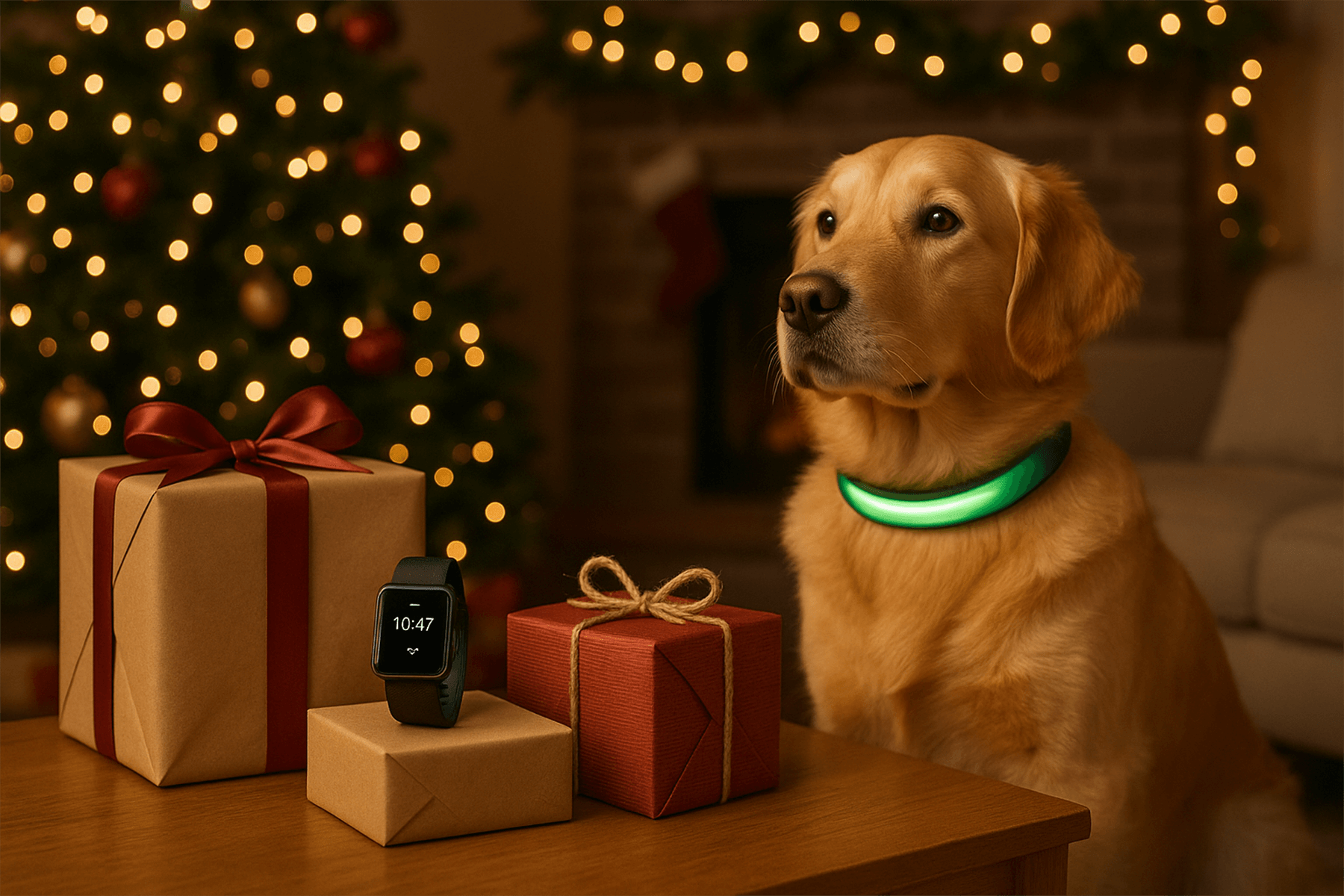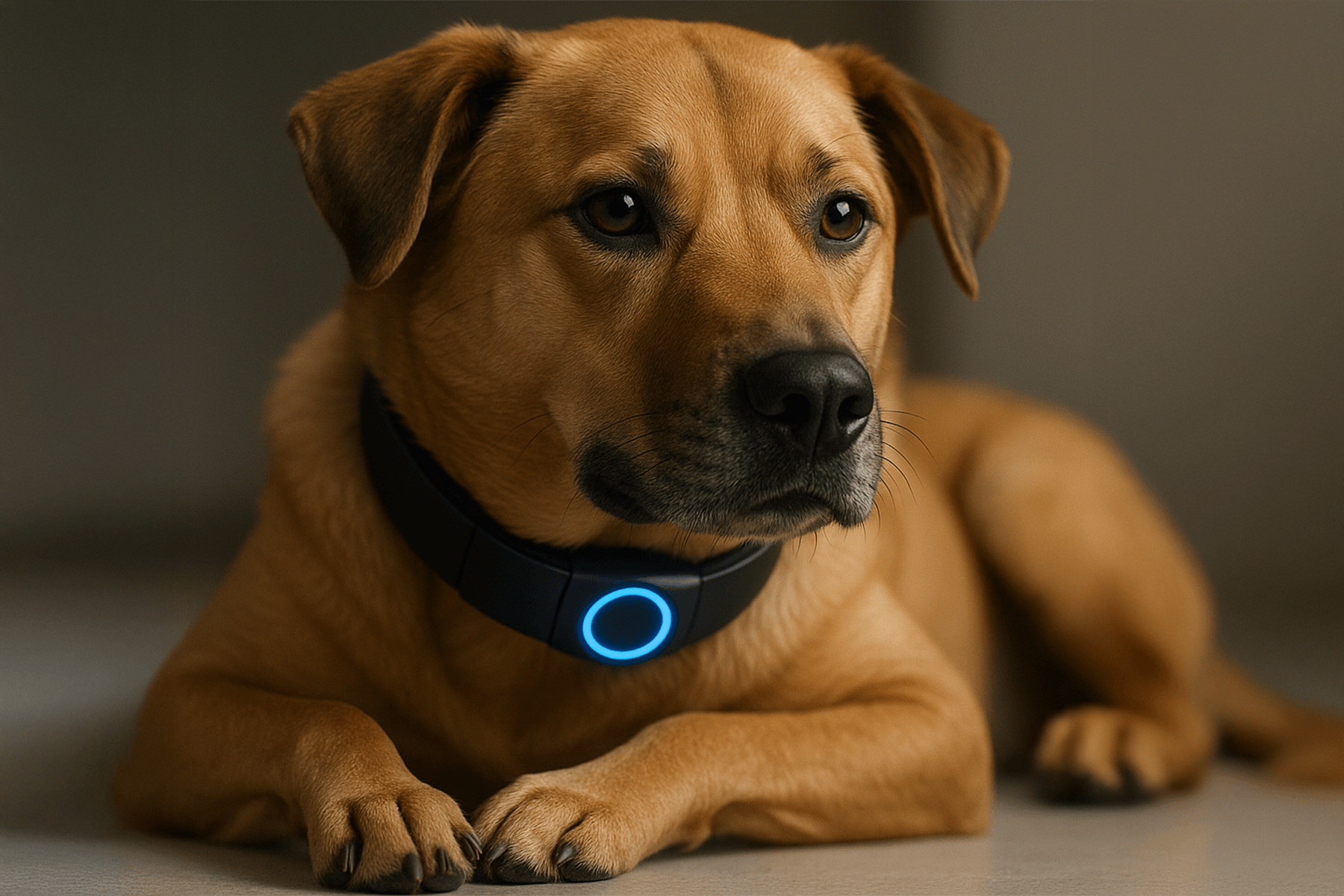In short: The evolution of AI-enabled pet wearables is teaching valuable lessons for human longevity tech — bio-sensors, behavioural analytics, and continuous wellness monitoring in pets map a future path for humans.
The wearable health-tech market for humans has matured, but the related domain of pet wearables is rapidly innovating in parallel. Devices for dogs and cats are now equipped with biometrics, AI behavioural analytics, and integration with veterinary care. Those innovations aren’t just for pets—they may offer early signals and models for human-longevity technology. This article explores what people are searching for, how pet health tech is evolving, and what human wellness tech can borrow from our furry companions.
What People Are Searching For
Search interest around pet wearables shows several clusters of inquiry: how pet tech tracks health, how it connects to human wellness, and what future applications might look like. Key search intents include:
- “Pet wearable health monitor collar” – consumers wanting to monitor pet heart rate, sleep, and activity.
- “Connecting human and pet wearables wellness” – families looking to sync pet health and human health goals.
- “AI pet wearable data human health” – technologists exploring crossover applications.
- “Human longevity lessons from pet health tech” – a new niche thought-leadership search pattern.
In essence, consumers and technologists alike are asking: What can pet wearables detect early? What sensors matter? How can data from animals inform better human health monitoring? There’s growing interest in the “human-animal bond” and the shared ecosystem of health devices.
What’s Happening in Pet Health Tech That Signals Human Longevity Trends
The pet wearable space is pushing rapidly from basic tracking to deeper health and behavioral insights. Several key trends stand out:
- Biometric sensors and AI analytics: Pet devices now monitor heart rate, respiration, activity, sleep, and behavioural indicators. Some smart collars alert owners to unusual licking, scratching, or restlessness.
- Continuous wellness rather than reactive care: Rather than waiting for symptoms, pet wearables surface subtle deviations that may signal health issues early.
- Human-pet wellness linkage: Some brands explicitly link pet and owner data—encouraging joint activity, shared health goals, and reinforcing the idea of a “family wellness” ecosystem.
- Data integration and research programs: Institutions are studying the human-animal bond using wearable and AI data, indicating crossover value.
For human longevity tech, these patterns matter: wearables that offer early detection, integrate behavioural and physiological sensors, and support holistic health monitoring may borrow lessons from the pet side where ubiquity and data-rich monitoring are emerging faster.
Companies to Watch: Where Pet Health Tech Meets Human Implications
Several companies in the pet wearable space stand out for their advanced tech, and these are platforms from which human-longevity insights may emerge:
- PetPace: Smart collars delivering vital-sign tracking (pulse, respiration, temperature) and tele-veterinary integration.
- FitBark: A dog wearable that links with human fitness trackers and promotes joint pet-owner wellness routines.
- Tractive: Expanded from GPS tracking into health monitoring (resting heart rate, respiratory rate) in 2025.
- Invoxia: French electronics firm known for advanced pet trackers; shows how consumer electronics and health tech converge.
Meanwhile, human-wearable companies such as WHOOP and Oura are leading in sleep, recovery, and biometric wellness tracking—yet there’s a gap in crossover specifically leveraging pet-derived data. The implication: pet wearables are a live lab for sensors, baselines, and behaviour analytics that may accelerate human wellness adoption.
Key Takeaways
- Pet wearables are maturing into full wellness platforms—monitoring physiological, behavioural, and environmental metrics rather than just location.
- Insights from pet monitoring (baseline behaviour, early deviation detection, shared owner-pet routines) may inform human-longevity and preventive wellness tech.
- Companies already building this ecosystem could be strategic partners or bellwethers for cross-domain health innovation.
What This Means for You
If you’re a consumer, tech-watcher, or wellness professional, this crossover territory is rich with opportunity. For consumers: consider how your pet’s health tracking may mirror or augment your own wellness routines. For innovators: explore sensor platforms, data-fusion models, and multi-species analytics. And for wellness strategists: the human-pet bond offers a unique user behaviour lens—enabling engagement pathways, dual-device ecosystems, and unified wellness tracking that spans species.
FAQ
- Can pet wearables really inform human health tech?
Yes. The sensor types, baselines, and analytics used for pets provide test-beds for human-longevity wearables. The translation requires human-specific validation but the architecture is similar. - What sensors from pet devices carry over to human wearables?
Key sensors include heart rate, HRV, respiration rate, sleep/activity patterns, and behavioural anomaly detection. These overlap strongly between pet and human devices. - How does the human-animal bond factor into wearable insights?
Data show pets influence owner behaviour (exercise, routine, stress relief). Wearables that monitor both can tie into improved holistic wellness. - Are there companies already leveraging this crossover?
Yes. FitBark links pet data to owner health goals; PetPace and Tractive offer rich data streams for pets that may produce human insights. Research organizations are exploring these links. - What are the major challenges in translating pet health tech to human longevity?
Challenges include sensor accuracy on animals, generalising behavioural baselines across species, privacy/data issues, and validating outcomes in humans. - Can tracking my pet’s wellness improve my own health?
Indirectly, yes. When you monitor your pet’s activity, you’re often prompted to exercise more, maintain consistent routines, and lower stress. - How should someone interested in human longevity apply lessons from pet wearables?
Adopt continuous monitoring, multi-sensor fusion, behavioural analytics, and see wellness as a shared, system-level activity rather than isolated vitals. - Which pet wearable brands are most advanced today?
PetPace, FitBark, Tractive, and Invoxia currently lead with AI-enabled monitoring, bio-sensing, and app integrations. - Should I buy a pet wearable specifically with human wellness in mind?
Buy for your pet first. If your goal is human wellness, pair your wearable with your pet’s for synchronized lifestyle insights. - What’s the future of pet-inspired human health tech?
Expect deeper sensor integration, predictive analytics for both species, and unified dashboards linking pet and human data for preventive care.


